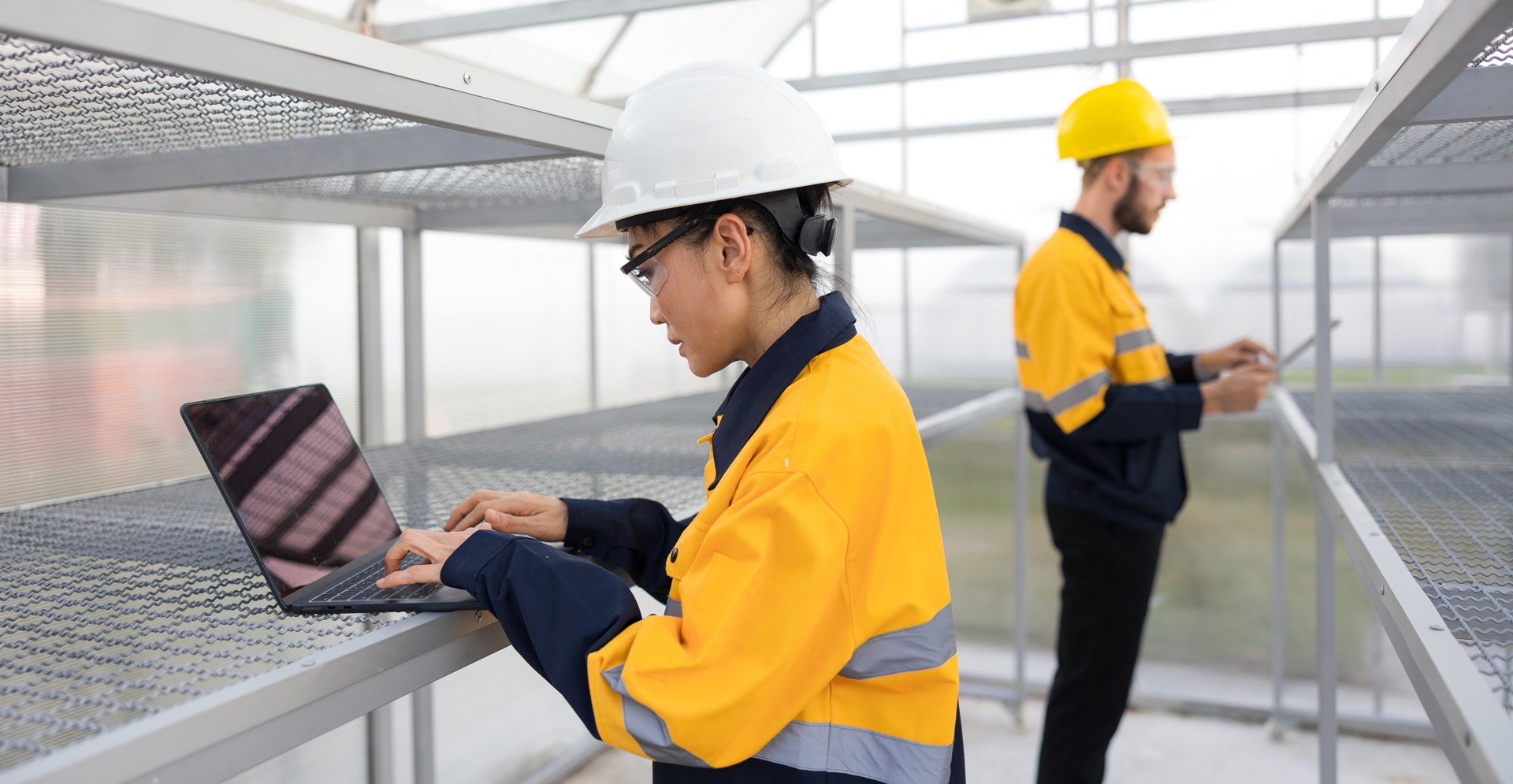Our world today is faced with significant challenges. Less urban spaces for growing populations. Energy supply disruptions and increasing energy bills. Hotter summers and harsher winters. Rising sea levels in coastal zones and heightened drought conditions in other areas. With so many shared challenges, there are opportunities to overcome them if we remove the constraints that are holding us back. Are we standing in our own way?
The last five years have seen the dawn of a new reality for the design, engineering and consultancy industry. While the pandemic slowed down projects, impacting budgets and forecasted work in some industries; our sector saw the decades-long traditional business operating model pushed to evolve, leading to new revenue streams and subsequently, the demand for an evolving, highly skilled talent base.
And with fast-approaching net-zero targets and new policies and regulations around environmental, social and governance (ESG) considerations, our industry is faced with increasing pressure to adopt new technologies and sustainable practices at pace with the transformation ahead.
We are at a critical juncture, and there are also huge market opportunities to thrive in tomorrow’s world. To truly change, global collaboration and integrated projects are the way forward. Practically this would mean moving beyond ‘time and materials’ contracts to explore more agile and attractive business models. We can’t do it alone.
Our efforts as designers, engineers, scientists and consultants to action transformative progress can only be fruitful if clients too are willing to evolve and incentivize change. It makes business sense too. Over the last five years, stock funds that were weighted towards companies with positive ESG scores have outperformed across global markets1. Inaction today will not only hurt the world, but also our collective ability – clients and consultants alike – to benefit from investing in tomorrow.
An evolving industry landscape
There has been some progress. From the increased adoption of technology and automation in projects, to shifts in consumer preferences for sustainable and socially conscious businesses and purchase decisions. While all this has led to changing expectations around types of services, it hasn’t yet shifted the dial far enough on ‘delivery’ mechanisms, how we are contracted to work and business partnership and incentive models to meet these trends. Therein lies the biggest opportunity for us to move the needle.
Digitalization – reshaping processes and solutions
According to PwC2, by 2030, up to 45% engineering activities could be automated using advanced technologies like Artificial Intelligence (AI), likely leading to significant productivity gains and cost savings. The Economist’s World Ahead 2023 analysis unpicked ‘Mixed Reality’ as an important trend. Advanced language models too, can be particularly beneficial in consultancy work in identifying data patterns, and generating insights for informed recommendations and decision making3. Are we ready to unlock the full potential of fast-evolving developments like this?
Data analytics and innovative technologies can improve project delivery, providing opportunities for improved decision making, collaboration, communication, and greater accuracy. In cities, for example, implementing AI systems will reduce water waste and predict demand more accurately, with smart meter installations expected to grow 28% by 20264. At Arcadis, we are already seeing promising pilots in the City of Canton, Ohio. By integrating data sources and running AI models, we have developed digital twins that create a virtual model of the utility company’s water distribution system, helping them reduce water loss by analyzing data to identify leaks in real-time, significantly earlier than could previously have been found.

ESG considerations
Sustainability and ESG considerations have been driving forces for the transformation of various sectors. For example, as the demand for renewable energy increases aligned with net zero goals, engineering and design firms are increasingly advising on decarbonization strategies and projects related to solar, wind, and other forms of clean energy. The automotive industry is also undergoing a significant transformation as electric and autonomous vehicles become more prevalent. And the built environment sector is seeing a trend towards green buildings, retrofitting existing buildings and livable urban spaces.
An integrated project approach
Mega trends like climate adaptation and rapid urbanization are pushing businesses to realize that solutions to these problems cannot be achieved in isolation. For example, to solve decarbonization and reduce energy use, we are seeing much greater collaboration and integration between energy users across all sectors, including buildings, transport, and industry, with power producers and utility providers. Projects too are moving in a similar trend, with fast-changing regulatory, societal and market environments adding pressure. Clients are looking for partners who can work shoulder-to-shoulder with them through all stages of a project, from co-creating strategies through to implementation, making sense of the evolving landscape and the business case for investment. In the UK, for example, we are supporting Transport for North which covers cities including Manchester, Liverpool and Leeds with their decarbonization strategy, providing them with confidence that they are future proofed as they look to act on climate change.
Shifting mindsets
All this is also leading to a shift in mindset – from focusing purely on siloed projects to wider solutions that integrate responses to water, energy and climate challenges. There’s a huge benefit in this integrated, systems-thinking approach. By 2050, the integration of sectors such as energy, transport, and buildings could result in cost savings of up to €200 billion per year in the European Union5 alone. And, from a socio-economic perspective, the integration of services such as water, wastewater, and climate resilience is key to achieving sustainable resilience in cities, posing a strong future business opportunity6, as demonstrated by the Wuhan Sponge City program.
While we have certainly transformed over the last few years, the question remains: are we moving fast enough? What practical steps can we take to adapt today so that we can continue thriving in the future?
The biggest opportunities of our time
Let’s be honest, the biggest needle movers of our time are sustainable practices, powered by innovation and digital tools that build resilience into our cities. As an industry, we have a significant opportunity to help mitigate the impacts of climate change through a focus on sustainable development and operations. However, with the IPCC warning that we are already falling behind, urgent action is needed to accelerate efforts. Projects need to have a more holistic, integrated approach, also considering the impact on society, particularly as challenges like climate change, water scarcity and energy affordability disproportionately affect vulnerable communities. This urgency requires immediate action from all stakeholders to create a more sustainable future for all. Considering nature and biodiversity, carbon emissions, and social impact in the planning and implementation of projects should be a given. Planning resilient cities will be key.
There is no single solution or organization that has all the answers. But collective working and partnering with other like-minded organizations can help the industry progress. For instance, digital disruptors bring to the table new technologies and a unique understanding into consumer buying behaviors and preferences. These present data and pain point insights which, if used effectively, will not only bring value at various stages of the project, but also help create better, more inclusive solutions for all. And we need to be bolder about the risks we take. New solutions like ChatGPT may seem intimidating, but if used effectively, can enhance processes and free up time for value added work. Working together and putting aside differences to achieve these common goals, supported by modern technologies, can help truly accelerate our industry’s transformation.

Transforming our industry for the future
How are we creating the right environment, business models and opportunities for the transformation needed?
Building a strong talent pool, into the future: By 2028, one-third of skilled workforce will retire at a faster rate than younger workers enter the field to replace them, leaving more than 3 million skilled trade jobs unfilled7. Our industry and clients are seeing the greatest workforce transition of our time – with capability availability, early retirement and gig working being areas of concern that we need to anticipate and be ready for. These pose both a challenge, and a prospect. While there’s loss of institutional knowledge, there’s also an opportunity to drive ground-up change and new ways of thinking. Focusing on an agile workplace with space to develop and upskill will be key in creating employer attractiveness and ensuring we have the right people working on the right projects. We too are seeing this transformation and are taking steps to stay ahead. Arcadis’ Global Collaboration Policy, for instance, removes barriers to collaboration, cross teams and cross borders. And, through Arcadis programs like Digital Base Camp, Sustain Abilities, the Energy Transition Academy and Quest, powered by the Lovinklaan Foundation, we are investing in a learning platform for people to upskill in sustainability and digital, and also, expand their skillsets and learn-on-the-job from other teams through funded experiential project work.
But that’s not enough. We need to relook at how our industry operates, and get more hands-on-deck to help lead our industry’s transition. Consultants and clients alike need to be comfortable with being uncomfortable, taking measured risks with new ways of working and business models. To create space for sustainable practices, innovation and development, our traditional business model needs to shift from purely billable hours towards recognizing the value provided by employees. And leverage partnerships to go further. Finding partners to co-create with us can provide access to complementary skills, shared resources, and help us expand our market reach. Together, we can spark new ideas and solutions that may not have been possible otherwise, like our eCATS team in the Netherlands did when developing an innovative solution to transform redundant natural gas infrastructure for renewable energy storage.
The challenge ahead may seem daunting, but the time to act is now. We must be open to taking risks and testing new pilots and technologies, bold in our commitments around sustainability and willing to try new partnerships to accelerate our industry’s transition. Thriving in tomorrow’s world requires action today – no one organization has all the answers, but collectively, we can create solutions for a sustainable future.
Looking ahead, we’ve taken the best ideas, innovations and examples of integrated projects to shape six strategic pillars that can be considered to thrive in carbon neutral and prosperous cities of the future: Explore our perspective: ‘Charged up for Change’
Sources
1 Research from ESG Book shared exclusively with Reuters
2 PwC (2021): Sizing the prize: What’s the real value of AI for your business and how can you capitalise?
3 Harvard Business Review (2021): Why consultants need to embrace AI
4 ABI Research
5 European Commission Study
6 World Bank Group Report
7 Forbes





